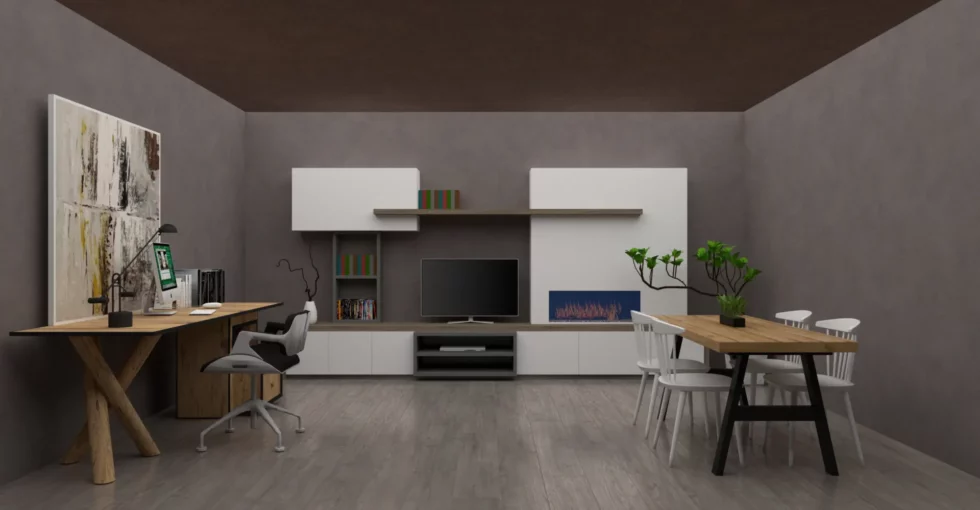Living in rooms where the indoor climate is too damp or too dry makes people feel uncomfortable and damages their health in the long term.
Excessively dry indoor air in the home can cause the skin, respiratory tract and mucous membranes to dry out, resulting in irritated eyes or skin as well as coughing. In addition, the risk of infection with flu viruses is much higher, as viruses have a longer lifespan in dry indoor air.
A room climate that is too humid is perceived as "unpleasantly humid". High humidity in the air disrupts body temperature regulation. The body is able to cool down by sweating. If the humidity in living spaces is too high, the evaporating water on the skin can no longer be absorbed as well by the air. To prevent the core body temperature from rising any further, the circulation is slowed down. Tiredness and exhaustion are the result.
Furthermore, high humidity in the air encourages the growth of mold and bacteria, and allergic reactions and respiratory diseases (e.g. asthma) are possible consequences.
Absolute - Relative - Optimum humidity
The term humidity refers to the proportion of water vapor in the ambient air.
A distinction is made between absolute and relatively high humidity, whereby for human health primarily the relative humidity is decisive.
Absolute humidity:
Absolute humidity indicates the actual water vapor content of the air at a specific temperature. It is measured in grams of water vapor per cubic meter of air [g/m³].
This value can vary between zero and a maximum value that increases sharply as the air temperature rises.
Relative humidity:
The relative Air humidity indicates the percentage of the absolute air humidity that reaches the maximum value. It is given as a percentage [%].
Optimum humidity - optimum indoor climate:
The optimum humidity covers a certain range of relative humidity at which people feel comfortable.
The combination of optimum humidity (approx. 50%) and pleasant temperature (approx. 20°C) creates an optimum indoor climate.
Ideal interaction of room humidity and temperature in different living spaces
The parameters of ideal room humidity and temperature vary depending on the number of people in the room, the type of use and the length of stay in the living space.
The following guide values are given in the literature for ideal room conditions:
| Living space | Optimum humidity | Optimum temperature |
| Living room, office or study | 40-60 % | 20 °C |
| Bedroom | 40-60 % | 16-18 °C |
| Children's room | 40-60 % | 20-22 °C |
| Hallway | 40-60 % | 20-23 °C |
| Kitchen | 50-60 % | 18 °C |
| Bathroom | 50-70 % | 23 °C |
| Cellar | 50-65 % | 10-15 °C |
There is an increased risk of mold growth above 60 percent humidity. Heat and water cause mold to form on organic materials such as plaster, dust or wallpaper. Condensation forms where the warm air meets a cool exterior wall. The wall becomes damp and becomes an ideal breeding ground.
Reduce humidity
If it is not building defects (e.g. damp walls due to capillary rising damp) that lead to high humidity, the most common cause in living spaces is the lack of natural air exchange due to incorrect or infrequent ventilation.
There is a simple but very effective method to counteract this: airing rooms.
The aim is to achieve a high level of air exchange in the rooms in a short time without the walls / surfaces cooling down too much. In the cold season, short ventilation (approx. 5 minutes, 2-3 times a day) is sufficient. If the temperature outside and inside the home are approximately the same (warmer seasons), 20 minutes/ventilation is needed to achieve a sufficient exchange of air. It is best to open several windows in the home wide for a short time at the same time.
In the hope of reducing heating costs, many households turn the heating way down during the day so that the home cools down - less water vapor can be absorbed by the indoor air and the relative humidity rises. Heating in the evening is usually not enough to warm the cold exterior walls sufficiently. As a result, condensation forms on the wall, which in turn can lead to mold and the associated negative effects on our health.
If you avoid excessive cooling of the living space through constant moderate heating, heating costs are kept within reasonable limits and there is little need to worry about adequate indoor humidity.
In principle, electrically operated dehumidifiers can also provide a remedy.
Increase humidity
In winter, the air in the room is particularly often too dry, as the cool outside air is let into the room during ventilation and then warmed up. The relative humidity drops sharply. With tilt ventilation, warm air constantly flows outside and takes moisture with it. Therefore, shock ventilation is also recommended here.
If the humidity is too high despite a good ventilation strategy, targeted sources of humidity, e.g. indoor fountains, open aquariums or a variety of indoor plants, can counteract this. Hanging laundry in rooms where the air is too dry is not as attractive, but also very efficient.
Measure humidity
Humidity can be easily measured using a hygrometer. It is placed in the room, ideally neither too close to an outside wall nor near a window or door.
With an analog hygrometer, the reliability of the device itself can be tested by wrapping the device in a damp cloth for an hour. The humidity reading should then be 95 percent. If the value is not correct, it can usually be readjusted on the back of the hygrometer.
The reliability of a digital hygrometer can hardly or not at all be tested. Here you should rely on expert recommendations when buying.
In summary, signs of a less than ideal indoor climate in
too high humidity
- Formation of moisture on the windows
- Stains on the walls, ceilings or in corners
- Mold
- Unpleasant odors
- Negative sense of well-being
Humidity too low:
- Cracking of wood with accompanying formation of cracks and/or fissures (e.g. parquet, floorboards, furniture, windows, etc.)
- Poor plant growth
- Frequently recurring infections
- Dry and itchy skin, scratchy throat
- Negative sense of well-being
Conclusion
The indoor climate affects both the building fabric and the well-being of the people living in a building. If the relevant relative humidity and temperature parameters are permanently exceeded or undercut, we recommend taking measures to prevent negative effects.

